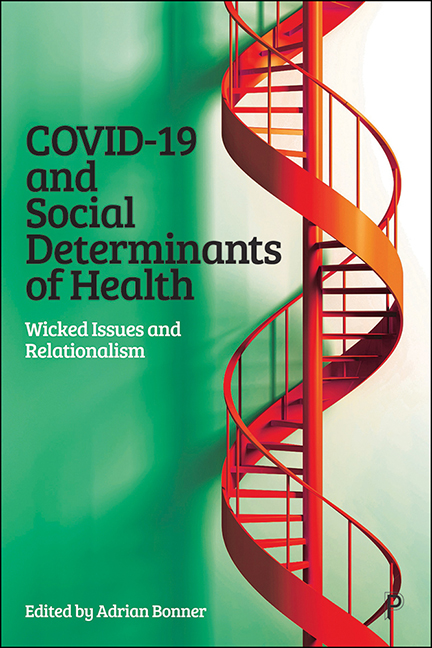Book contents
- Frontmatter
- Miscellaneous Frontmatter
- Contents
- List of figures and tables
- Notes on contributors
- Foreword
- Introduction
- Part I Wicked issues and relationalism
- Part II Regionalism and geopolitical environments
- Part III Public sector, COVID-19 and culture change
- Part IV The third sector
- Part V The case for relationalism
- Part VI Engagement and proposed changes
- Conclusion
- Appendix The Centre for Partnering
- Index
7.1 - Case study: Racism and xenophobia – America’s deadly pre-existing conditions during the COVID-19 pandemic’s first year
Published online by Cambridge University Press: 18 January 2024
- Frontmatter
- Miscellaneous Frontmatter
- Contents
- List of figures and tables
- Notes on contributors
- Foreword
- Introduction
- Part I Wicked issues and relationalism
- Part II Regionalism and geopolitical environments
- Part III Public sector, COVID-19 and culture change
- Part IV The third sector
- Part V The case for relationalism
- Part VI Engagement and proposed changes
- Conclusion
- Appendix The Centre for Partnering
- Index
Summary
Introduction
As it rampaged through the United States during the pandemic’s first year, COVID-19 exposed and exploited deep-seated racial fault-lines at a cultural and political moment particularly primed for racial conflict. The United States’ long history of structural racism, permeating all aspects of life including housing, employment and healthcare, placed American minorities at disproportionate danger from COVID-19. Yet instead of fighting inequity and working to ameliorate the social determinants of health that dramatically escalated the virus’s risk to America’s most vulnerable citizens, the US government largely mishandled responses to the virus, and even fanned the flames of racism. The combination of American racism and COVID-19 resulted not only in spikes in hate crimes and discrimination, but also the avoidable deaths of thousands of Americans.
Structural racism’s mounting death toll
Well before COVID-19’s arrival, structural racism left scars on the health of the US’s minority population. Heading into the pandemic, Black and Latinx Americans suffered from more medical comorbidities and poorer health outcomes compared to White Americans, and Black Americans’ life expectancy was four years shorter than that of White Americans – a disparity that COVID-19 would only worsen (Bosman et al, 2021; CDC, 2021a). As the virus began to spread, minority communities were primed for a public health disaster.
From January through March 2020, the virus took root in the early hotspots of Washington and New York states, quickly exposing racial differences in infection rates, morbidity and mortality. With its high population density, New York City was a particularly ripe breeding ground for viral spread. By the end of March, the city accounted for one-third of all confirmed cases in the US (Higgins-Dunn, 2020). Heavily Black and Latinx neighbourhoods saw the city’s highest infection and death rates (Schwirtz and Rogers Cook, 2020; CDC, 2021b).
These trends held true as the pandemic spread country wide. Nationally, Black, Latinx and Native American patients were more than twice as likely to be hospitalised and twice as likely to die from COVID-19 compared to White and Asian patients (CDC, 2021b).
- Type
- Chapter
- Information
- COVID-19 and Social Determinants of HealthWicked Issues and Relationalism, pp. 114 - 124Publisher: Bristol University PressPrint publication year: 2023



